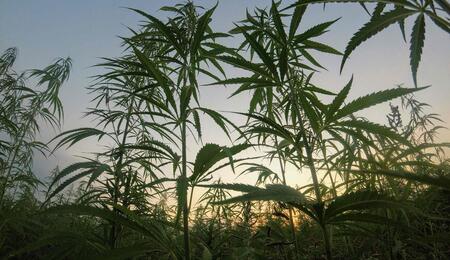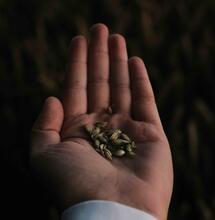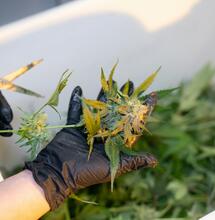Morocco's Local Cannabis Variety Exhibits Strong Chemical Stability

A new study has discovered that the locally grown "Beldiya" cannabis strain is much more chemically stable than comparable foreign strains being grown in northern Morocco. This stability comes from the consistent seeds cultivated by local farmers and the fact that "Beldiya" flowers earlier than other types, preventing crossbreeding with exotic varieties.
This research was published in "Food Chemistry Advances" and analysed five different Cannabis sativa L. strains over three grow seasons between 2014 and 2016 in the region of Bab Taza near Chefchaouen province. Researchers employed progressive methods to analyse the chemical makeup of the strain. Led by Ismail El Bakali, the team identified 13 different cannabinoid compounds in the samples.
They found five major cannabinoids at concentrations greater than 5%: THCA-A, CBDA, CBD, Δ⁹-THC, and CBN. Among these, CBN was the most common, with an average of 52.24% across all the cultivars. The levels of Δ⁹-THC and CBD were the second and third highest, averaging 11.55% and 9.83%, respectively.
The study also revealed that the cannabis plants varied significantly in their chemical profiles. Using statistical methods, the researchers grouped the samples into three distinct categories based on their cannabinoid levels. The most interesting finding was that the indigenous "Beldiya" cultivar maintained a consistent chemical profile across all three years, while the exotic varieties like "Avocat," "Mexicana," "Critical Plus," and "Khardala" showed considerable variation from year to year.
Why is This Moroccan Cannabis Strain So Stable?
This uniformity is largely due to how local farmers produce and select their seeds, along with the earlier flowering time of "Beldiya," which limits hybridisation with foreign strains. The study also documented that cannabinoid levels varied from year to year. In 2014, higher amounts of Δ⁹-THC were found, while 2015 saw raised levels of CBD. The lowest concentrations for most of the major cannabinoids were found in 2016.
The researchers explained that environmental and genetic factors played significant roles in these variations, particularly when modifications in foreign hemp varieties led to decreased cannabinoid production in 2016. Interestingly, CBN levels rose in the last growing season for all cultivars except "Avocat," likely due to the oxidation of THCA-A during the drying and storage process.
The results of this study are important for potential medical uses of cannabis. Cannabinoids have demonstrated various therapeutic benefits: CBD is known for its antipsychotic, anti-inflammatory, neuroprotective, and antiseizure effects, while Δ⁹-THC has shown anti-nausea, neuroprotective, and anti-inflammatory properties.
This research provides valuable insights into how cannabis behaves under the specific conditions found in northern Morocco, especially following the country's 2021 legalisation of cannabis for medicinal purposes through Law No. 13-21. This law allows its use in various sectors, including industry, medicine, and cosmetics.
The authors of the study determined that their analysis delivers a set of genetic traits for understanding chemical variation in Cannabis sativa, which could be useful in future studies. They believe these findings contribute to a deeper understanding of cannabis chemistry and bring us closer to leveraging its potential for therapeutic and industrial applications.
The research team comprised scientists from multiple Moroccan institutions.
More From Soft Secrets:




